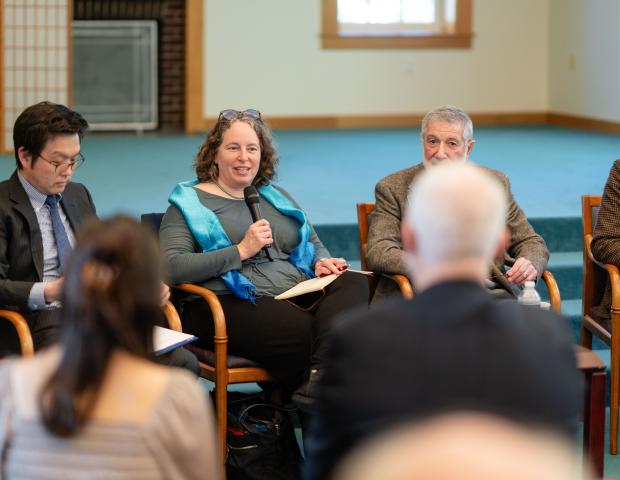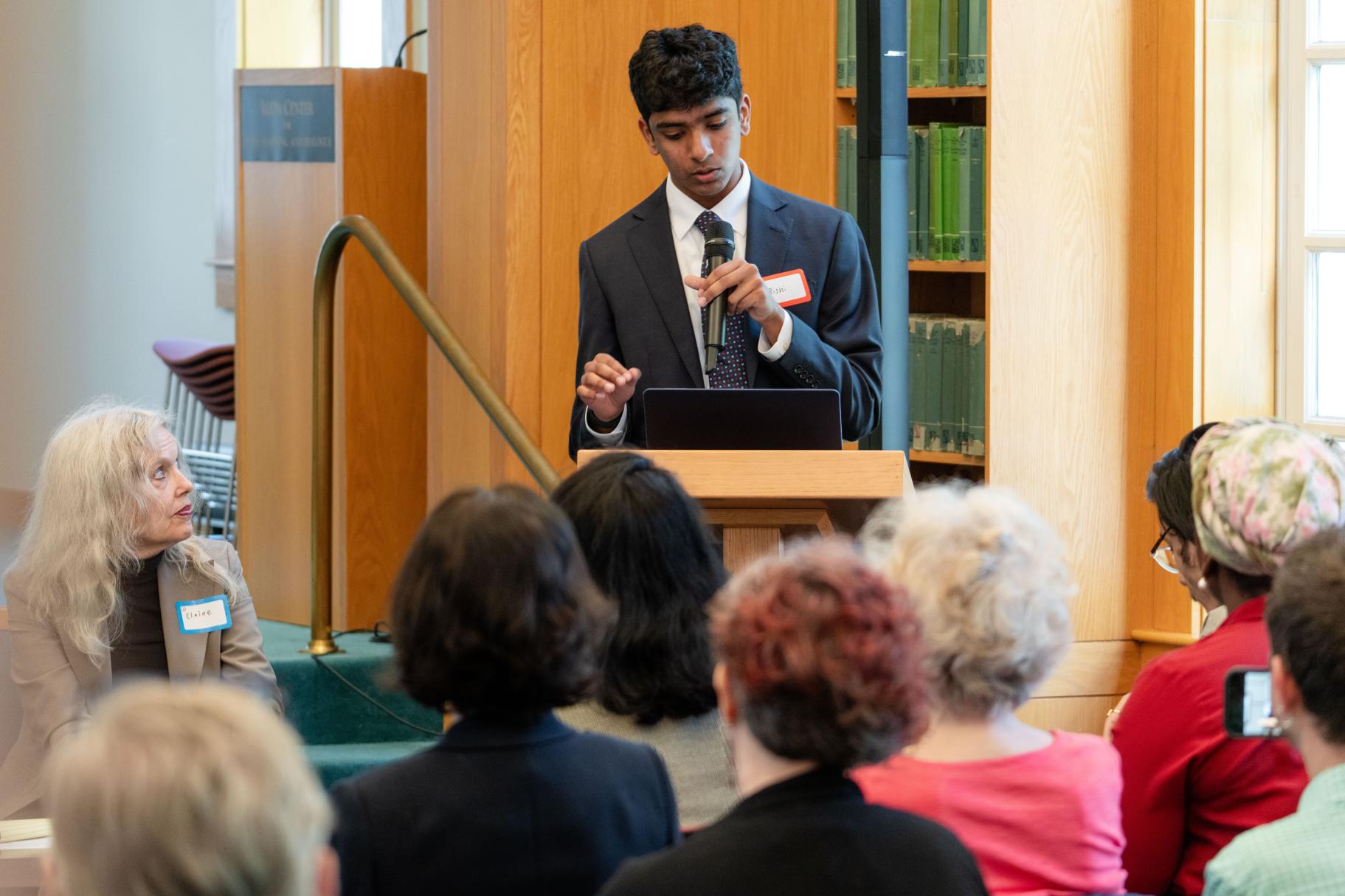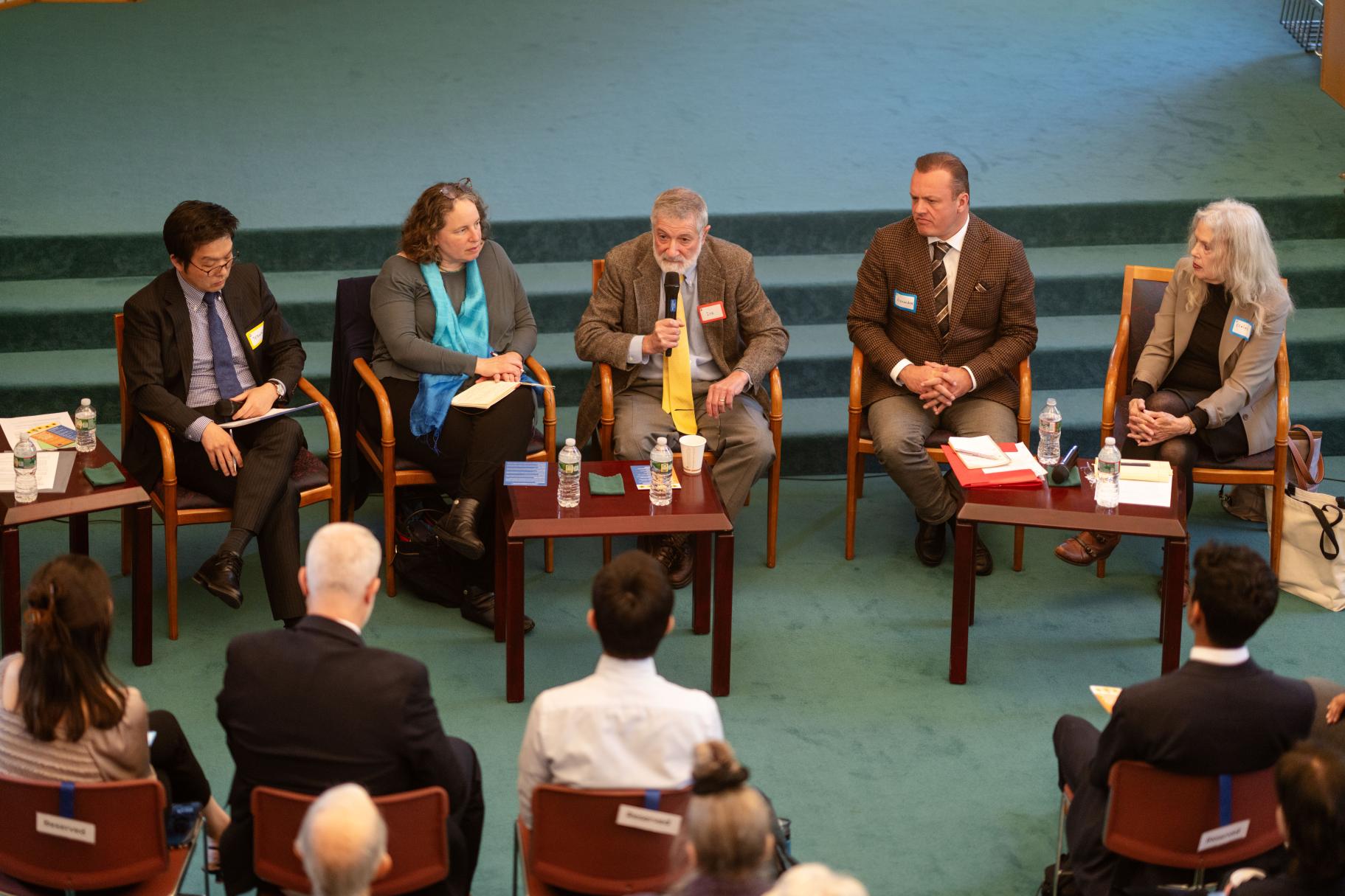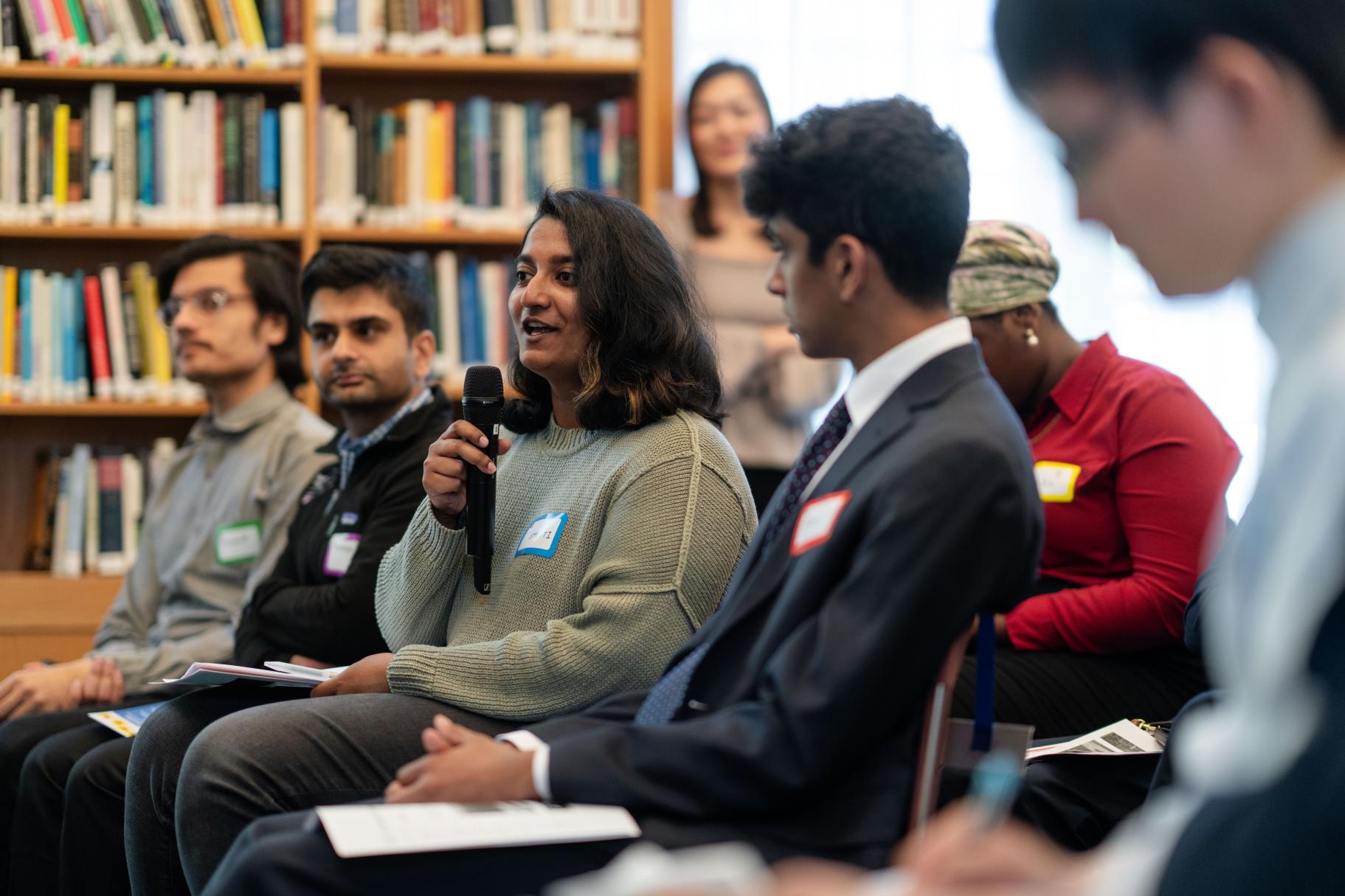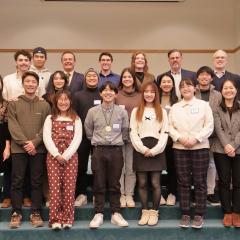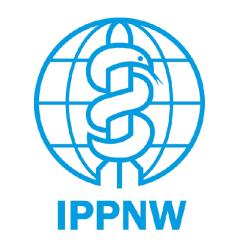Forum Promotes the Power of Nuclear Disarmament Education
We often think of efforts relating to the abolition of nuclear weapons as playing out primarily in the domains of policy, politics, and international relations, an assumption that is largely true. Yet a forum held at the Ikeda Center on May 10, 2024, argued that foundational to all these efforts is the task of educating as many people as possible not only about the imminent dangers and consequences of nuclear war, but also about the very real possibility of achieving global nuclear disarmament and the actions ordinary citizens can take toward that goal.
The forum itself was a manifestation of disarmament education in practice. Conceived by Kentaro Shintaku, the event served as his final project for a social change and education course he was completing at the Harvard Graduate School of Education, where he concurrently was completing his master’s degree in Educational Policy and Analysis. In addition to opening remarks from Shintaku, two high school activists from Students for Nuclear Disarmament, Rishi Gurudevan and Eddie Laiche, offered introductory reflections, each demonstrating the change-making power of youth.
The event also featured a panel discussion, moderated by Tetsushi Ogata, Managing Director of the Soka Institute for Global Solutions and Visiting Assistant Professor of Peace and Conflict Studies at Soka University of America (SUA). The esteemed panelists included: Alexander Harang, Distinguished Adjunct Professor and Senior Research Fellow at the Soka Institute for Global Solutions at Soka University of America (SUA); Ira Helfand, a member of the International Steering Group of the International Campaign to Abolish Nuclear Weapon (ICAN) and co-Founder and Past President of Physicians for Social Responsibility; Meira Levinson, the Juliana W. and William Foss Thompson Professor of Education and Society at Harvard Graduate School of Education, co-director of the Graduate Fellowship Program at the Edmond & Lily Safra Center for Ethics, and Director of the Design Studio; and Elaine Scarry, the Walter M. Cabot Professor of Aesthetics and the General Theory of Value at Harvard University.
Youth Making a Difference
Before turning the floor over to the students for their presentations, Center Executive Director Kevin Maher offered framing remarks on what the cause of nuclear disarmament meant to the founder of the Center, the late Daisaku Ikeda. He said that in his annual peace proposals, totaling 40 in all, “Mr. Ikeda consistently underscored the catastrophic consequences of nuclear weapons, both in terms of human suffering and environmental devastation.” Further, “as a Buddhist, Mr. Ikeda objected to the moral and ethical implications of nuclear weapons, arguing that their very existence represents a grave threat to humanity and contradicts the fundamental principles of peace and respect for the dignity of life.” Maher also noted that in his 2006 proposal, Ikeda explicitly addressed the topic of today’s discussion, saying
I would like to stress the importance of disarmament education as a means of transforming the paradigms of society to move from a culture of war characterized by conflict and confrontation, to a culture of peace based on cooperation and creative coexistence…. Peace is not simply the absence of war. A truly peaceful society is one in which everyone can maximize their potential and build fulfilling lives free from threats to their dignity.
The program opened with thoughts from Shintaku on how he was inspired to participate in the disarmament issue as well as his hopes for today’s event. As a kid growing up in Japan, he said, “I was only interested in climbing trees and baseball until the age of 15.” That’s when an English course taught by a graduate of SUA opened his mind by diving “headlong into works of great literature, biographies of great people, and discussions on global issues including nuclear abolition.” Also key to his opening up was reading Daisaku Ikeda’s peace proposals. Inspired by Ikeda’s thoughts on the quest for world peace and “the power and important role of youth,” Shintaku asked himself: “Would it be possible for someone like me to do something for realizing a world without wars and nuclear weapons someday?” Next steps on his journey included participation in the Nuclear Politics Program offered by the Soka Institute for Global Solutions at SUA and “the incredible opportunity to meet with Dr. Ira Helfand” who inspired me that there’s something I can do as a student and as an aspiring educator.” His commitment was fully “galvanized,” however, by a negative experience during his graduate studies when he encountered fellow students making light of and even discussing the merits of nuclear weapons. To be so oblivious to the past and potential tragedy and suffering of nuclear war shocked him. In response, Shintaku redoubled his commitment to disarmament and set about planning this event in collaboration with the Ikeda Center. As he concluded his remarks, he said, “It is with immense gratitude that I stand before you today, humbled by the opportunity to engage in dialogue with each of you, as we collectively strive to advance disarmament education and cultivate a future of peace.” He also cited Daisaku Ikeda’s conviction that “even the most brilliant ideal will be no more than a dream if it remains locked up in one’s heart.”
The two high school students on hand also shared reflections on their experiences as burgeoning nuclear disarmament activists. Now a junior at Philips Exeter Academy in New Hampshire, Rishi Gurudevan traced the roots of his activism to his participation as a 13-year-old in a large climate rally in Los Angeles. He actually was encouraged to attend by his 7th grade English teacher who “urged us to challenge a traditional narrative, which is at the heart of what I aim to leave you with today.” Though he has only been involved with nuclear disarmament activism for one year now, he has already founded a national organization, Students for Nuclear Disarmament*, which is rapidly expanding. He pointed to two disarmament inspirations. The first was Dr. Helfand, whose talk at Exeter on the real consequences of nuclear war shocked and “scared” him into action. Also at Exeter, a history teacher encouraged critical thinking among students, which led Gurudevan to question whether the most important thing to know about the bombs dropped on Hiroshima and Nagasaki was the standard narrative that they “saved American lives.” Then, researching the 1980s nuclear freeze movement for his history class, two points occurred to him. The first was that even though the movement was huge back then disarmament never happened. Why, he wondered. The other was that at no point has the disarmament movement attracted as many youth as other movements, such as climate and civil rights. With SND, Gurudevan is directly addressing both issues, “raising awareness among Gen Z” both about the threats of nuclear war and the main organizations working for disarmament. “After collaborating with an incredible group of students from across the country working to challenge status quo narratives and educate their peers,” he said, “I’m filled with hope and excitement about what we’ve yet to accomplish. Education will inevitably be key to our success.”
Like Shintaku and Gurudevan, much of Eddie Laiche’s disarmament activism was inspired by hearing Dr. Helfand speak on the threat of nuclear war and the paths toward abolition. Moved by the immensity of the suffering and devastation that would result from a nuclear explosion, “I felt profoundly in my heart that something like this should never be allowed to happen,” he said. “It was made clear to me through his speech that the catastrophe of nuclear war must be prevented by any means necessary.” When he asked Dr. Helfand about good ways to get involved, he pointed him toward the Back from the Brink** campaign, which outlines specific actions citizens and politicians can take to further the cause of abolition. As a specific goal, Laiche formed a “club in my school whose primary goal is to pass a Back from the Brink resolution in our local city government.” His group now has the support of the mayor and their goal is to get the city council to vote in favor of their resolution. He is also working with Gurudevan to grow and develop Students for Nuclear Disarmament. From his experiences he has learned that it’s important to “know how destructive nuclear weapons are, but people must realize their inherent ability to make a profound difference in abolishing them.” Ultimately, he wants all of us to realize we “are citizens of the world, whose responsibility it is to take action against catastrophic evil for the peace of humanity.”
Highlights from the Panel Discussion
Panel moderator Tetsushi Ogata opened by thanking Shintaku “for bringing all of us together. You know, this is a living testimony of how one person’s idea can bring people, move things, and then create something new from where we didn’t have something like this before.” He also explained how his own work at Soka University of America, including as managing director of the Soka Institute for Global Solutions, is devoted to challenging the idea that disarmament education is some kind of “privileged knowledge.” This is why SIGS recently conducted a training that was free of charge and open to students not enrolled at SUA. “We are trying to change this paradigm of disarmament education, and that’s why I’m here today,” he said. What follows are some of the highlights of the panel moderated by Ogata, who asked them to address such topics as: the state of nuclear disarmament education today; what the major challenges have been; how to make disarmament education a collaborative, joint process of learning; and how we can transition from a culture of war to a culture of peace.
Meira Levinson
I’ve spent a number of years working on, writing about, and trying to encourage youth activism, civic engagement, and now thinking about issues of educational ethics and educational justice. And I have to say that this audience in front of me is probably the most multi-generational audience I have seen in years for anything, you know, from a concert to a book talk to a play. We actually tend to self-segregate by generation, often. And this is a testament to the idea of collective multi-generational action and engagement to try to make our world a safer place, to try to advocate on behalf of all life, and to build a culture of peace together. And so, that is why I am here, to support that effort.
Ira Helfand
We encounter all the time resistance to the idea that people need to learn more about nuclear war. The press says everybody knows about this, they don’t need to cover it, there’s nothing new there. Sometimes we’re told this is even too scary to talk to people, especially young people, about. And we need to understand that that’s all wrong. We need to talk about this. We need to talk about it very directly. We need to talk about the bad stuff, about what nuclear weapons are going to do. Because without constantly reminding ourselves about this, we’re not going to be motivated to take action.
Elaine Scarry
[For my book The Body In Pain I] had taken as the bottom line of obscene behavior, acts of torture, which was happening [then] in many places in the world. And the act of torture is, of course, one where the torturer apes a position of power, but he’s not powerful at all. His opponent is tied to a chair. It doesn’t take any courage at all to do that. But as I finished this book, I realized that nuclear weapons were torture writ large. The world’s population has their hands tied to the back of a chair and can’t do anything about it. And there were two grounds for being horrified by nuclear weapons. First, the level of injury — to not only human bodies, but to everything we’ve made collectively and passed down over many generations. But then, in addition to the injury, there’s a second ground of obscenity, which is the fact that there was zero consent. The weapons hadn’t been authorized by the population. There had been no chance to say anything about it.
The nuclear exercises that are practiced 24-7 were not authorized by the population. There’s no part of it that involved any consent and that’s why it so conforms to the model of all of us just having your hands tied to the chair. Such that over decades you get as a population more and more infantilized so that you don’t even care that this is the arrangement. All of us in this room care, but it’s hard for other people to care. You might think that, well, war always involves a lack of consent. But that’s not true. Probably many of us in this room would try and stop a conventional war. [With wars] there’s a huge difference in that there are very high levels of consent [required] and your dissent matters.
Nuclear weapons are not beyond our control. They're not a force of nature.
Ira Helfand
Ira Helfand
Everybody has a right to know the danger that they face. It is not okay to keep that information from them. Elaine suggested this when she talked about the lack of consent. I approach this as a medical question, primarily. This is the greatest public health effort that’s ever existed. In medicine, there’s a concept of informed consent. If a patient is going to be offered a treatment, or offered the opportunity to refuse treatment, they need to know what the deal is here. What’s going to happen if they get treated? What’s going to happen if they don’t get treated? Young people today have a right to know, which we have essentially failed them in: what is going to happen if nuclear war takes place?
*
Nuclear weapons are not beyond our control. This is, they’re not a force of nature…. We’ve built these machines. I use this line all the time when I give a public talk. They’re about the size of the chairs we’re all sitting in. We’ve dismantled 50,000 of them. We know exactly how to do it. And all that is missing is the political will to dismantle the 12,000 that remain. And our job is to create that political will. And that’s a critical part of the message. We not only need to tell people that it can be done, but we need to provide to them vehicles. And that’s the whole rationale behind the Back from the Brink campaign, to create an explicit vehicle that people who are concerned about this issue can now use to bring about the change that they want to bring about.
Alexander Harang
What is it that we need to know? We need to know that there is a very real chance of nuclear weapons being used. It’s not just some abstract idea. It’s actually real. And it’s a very important part of our political discussion right now. And we have to know … that they can be used, and if they are used, we are losing everything. It will be a disaster… . It is the nuclear weapons in themselves that are the problem here. I think that was exactly what Kevin was showing with that quote from Ikeda: that there’s something ethical here which has to do with the weapons in themselves. The weapons in themselves should be seen as evil. And that’s a very important point that we need to bring into this.
Meira Levinson
One of the things that I think is missing here, is there is actually also at the same time an immense amount of educator discretion in terms of what we teach and how we teach it and what we think of as being through lines. And there are many topics that get taught outside of history classes. We could have English teachers, science teachers, art teachers…all sorts of educators taking on roles in elevating nuclear weapons, nuclear disarmament, peace education, as part of what they think of as being what they teach. I think if you get teachers as fired up about nuclear weapons disarmament and peace building, as many have become fired up around climate education and so forth, there are avenues for change.
*
We teach about [nuclear weapons] as a historical thing. And so we learn about it during our one day on World War II, and, and maybe during the Cold War. But that’s it. But part of, I think, what I hear Ira saying, and Alexander saying, and others, is obviously this is not just merely historical, just as say, indigenous peoples [and the injustices they have faced] are not merely [in the past]… . I think part of the message that we can promote much better in K - 12 education is that the nuclear weapons also are still with us, as are those who are trying to work to evolve.
Alexander Harang
We need to know that we can actually do something. We need some agency. Humanistic education, human education, what is that about? In my mind and thinking, it’s closely connected to peace education. Why? Because humanism, we can define it in many different ways, but one element of humanism is that you have a net positive view of what it is being human. Of course, we people do stupid things all the time. But net positive, we do more of the positive. We have more potential in us for the good than the negative. That’s a liberating idea for most people. The second element in humanism, given that we have a net positive view of what it is being human, there is sort of a natural tendency for humanists to believe in progress in one shape or form. And that, that’s also key to peace education.
Elaine Scarry
I think that we should be optimistic that once there begins to be a will to educate, we will absolutely be able to do it. The problem has been not only the brevity of time, but the fact that there’s a counter narrative going on…I think that the reason we should be optimistic is, young people are able to learn so quickly, that’s one reason. The ability of youth to turn on a dime and understand something really quickly. The second thing is that there are so many rich avenues of address. As Meira was saying, it isn’t just the history class. It’s the art class. It’s the ethics class. It’s the geography class. They all provide occasions for addressing this. Third of all, the forum can be flexible. We’ve heard about the reaction from two different people about hearing Ira give one lecture. I’ve heard of other instances of the effect of Ira’s lecture at Boston Latin. But there are also whole alternatives such as a one-week unit or a year-long course. There are right now online different resources for curricula, including things that have syllabi that you can download. There are funding agencies that will fund you for the work you have to do to design a new course.
Q & A and Conclusion: The Task Which Is Yours To Do
Following the panel there was time for a few questions and responses from the panelists. The first participant to speak wondered whether the use of social media to build a nuclear disarmament movement would result in only reaching “like-minded people.” Meira Levinson responded, saying, “Even if the people you are reaching are mostly like-minded, that can build the sense of community [and] of distributed leadership and ownership, so that nobody gets too overwhelmed or feels as if they have to make the kind of impossible choices. [This way] actually then people can take action in their local community.”
The next participant wondered about how to go about having conversations on nuclear disarmament with “family, your friends and your peers, and classmates.” Responding that “none of us feel comfortable walking up to somebody and saying, Hey, let’s talk about nuclear war today,” Ira Helfand offered some tips. One thing to do is to share resources, such as Annie Jacobs’ recent Nuclear War: A Scenario, “which is a terrific introduction to the whole subject.” Another idea is to refer them to disarmament activist Emma Pike, who has achieved millions of views on TikTok and other social media platforms. You could also, he added, mention that you’ve been to this event or done some other activity, “as a way of breaking ice.” There are many good ways “of getting that conversation started,” he said.
What about the challenge of promoting nuclear disarmament in the engineering community, asked the next attendee, himself an engineering student. How do we change the minds and goals of those who stand to make significant money in the field? As a physician, did Dr. Helfand have any insights here? “With doctors,” said Helfand, “it was actually somewhat easy to bring it up because what we were saying is this is a public health problem. And as doctors we have a responsibility to deal with this.” What’s needed in the arms industry, he added, is to “redefine how our money gets spent.” Instead of taxpayer money going to building nuclear weapons it could go to figuring out “how to dismantle them and how to store the waste and how to generate clean energy.” In terms of talking directly with individuals, one thing to do is encourage them to check out organizations such as Science for the People and the Union of Concerned Scientists. Alexander Harang added that one point he makes with nuclear scientists and engineers is that they are devoting themselves to building something that, ironically, actually “is not intended for use.”
The last question and discussion centered around the importance of the testimony of survivors, called the hibakusha, to advancing the cause of nuclear disarmament. Such direct, person-to-person contact is immensely moving and motivating, so it is unfortunate that the oldest of them are now in the last stages of their lives. But many resources do exist recording their testimony. One of these, said Dr. Helfand, features Setsuko Thurlow and is called Vow from Hiroshima, and is now being shown on PBS.
Following the Q & A, Dr. Ogata introduced the themes for the event’s breakout discussion groups. Participants were asked to respond to two prompts: 1) What is needed to promote disarmament education as a topic for public learning and engagement?; and 2) What public perceptions or attitudes about nuclear weapons need to be addressed to imagine a world free of nuclear weapons? These questions were designed, he said, to help us in “going against the tide,” so to speak, in a world so influenced by a defense industry seeking profits in particular and the influence of cultures of war in general. Here are some key takeaways from the small group discussions, which were entered online into the Padlet app:
- The importance of action at the local level and action of youth: book clubs, endorse Back from the Brink on as many local levels as possible.
- The disarmament movement was huge, then almost died, but in recent years is experiencing a big resurgence. But we’re still lacking media coverage.
- Peace should not be through weapons.
- Engage student activism and connect them with youth movements internationally.
- A fear-based culture in America is a critical reason why nuclear weapons have been normalized.
- Using various media beyond the classroom, like social media, cinema, and literature can be a great way to promote disarmament education.
- Nuclear deterrence is a great obstacle to our objective, but it can be overcome by emphasizing humanitarian impacts.
- National borders may divide us, but viewing the world as one big human family can be an effective way to advocate for disarmament.
- Develop and share visions of a culture of peace.
- Make peace more profitable than war.
After the breakout discussions, there was some time for shareback from the audience. Rishi Gurudevan held out hope for us being able to maintain our national identities while at the same time “seeing each other as all one big human family in which everyone is equally deserving of the right to live in a peaceful world.”
With time winding down, Professor Ogata asked each of the panelists to offer final thoughts. Speaking first, Professor Scarry made two essential points. One was that we should help people understand “how quickly this physically can be done,” noting that the dismantling of a nuclear trigger can be done within a matter of hours. Our other task is more difficult, she said, and that’s the “spiritual work,” though it has been done, she said, with other equally grave realities, such as the existence and then ending of slavery. Professor Harang said that he situates nuclear disarmament within the overall quest for a culture of peace. “Do we side with nonviolence or violence? Are we more interested in taking sides in conflicts of warring parties? Or really taking the side of peace against war? That’s the big question I would really like to see all of us reflect upon.” Ira Helfand confirmed Elaine Scarry’s point that the task of disarmament is indeed very “doable,” something that could fully be done, from negotiation to dismantling, within 10 years’ time. And if we “come together to get rid of this really existential threat to our survival,” he said, “not only will we eliminate that threat, but in the process of doing so, we’ll create a model of how countries can work together that can then be used to deal with the climate crisis [or] the next pandemic, when that occurs.” Then, to conclude he said that
there’s an old Yiddish adage that says you’re not expected to complete the task. But neither are you allowed to step back from that portion of the task which is yours to do. No one of us is going to solve this problem alone, but if each one of us sits back and figures out what can I do, and we all do that, which is ours to do, I think we’re going to be successful.
Notes
* https://www.students4disarmament.org/
** Back from the Brink “calls on the United States to lead a global effort to prevent nuclear war by”: 1) actively pursuing a verifiable agreement among nuclear-armed states to eliminate their nuclear arsenals; 2) renouncing the option of using nuclear weapons first; 3) ending the sole, unchecked authority of any U.S. President to launch a nuclear attack; 4) taking U.S. nuclear weapons off hair-trigger alert; and 5) cancelling the plan to replace the entire U.S. nuclear arsenal with enhanced weapons.
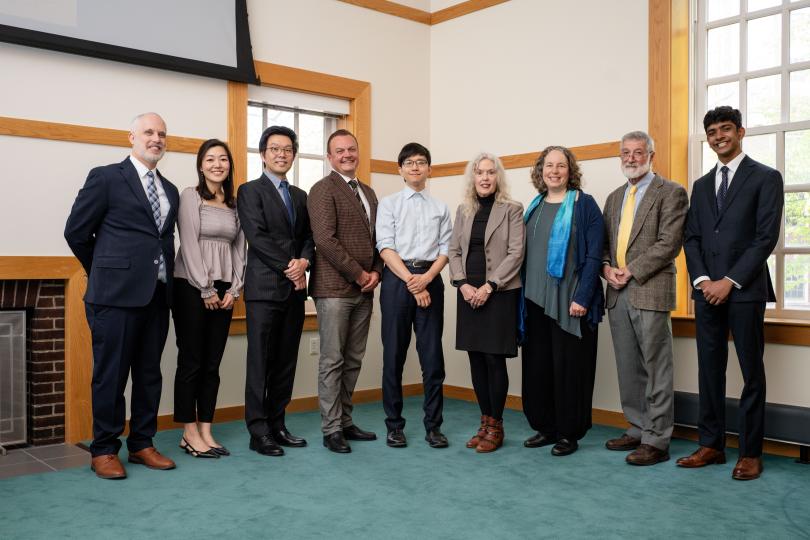
Panelists and Ikeda Center staff
